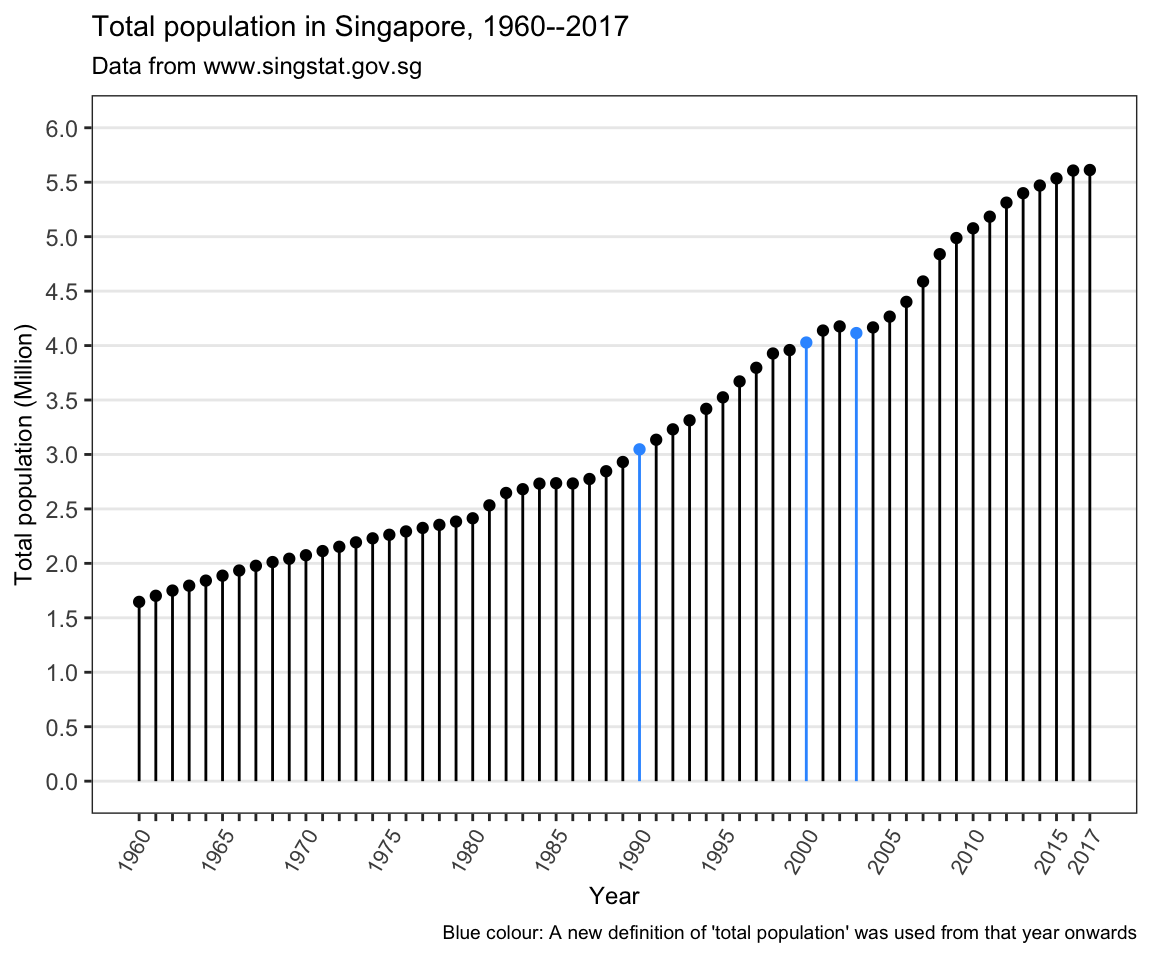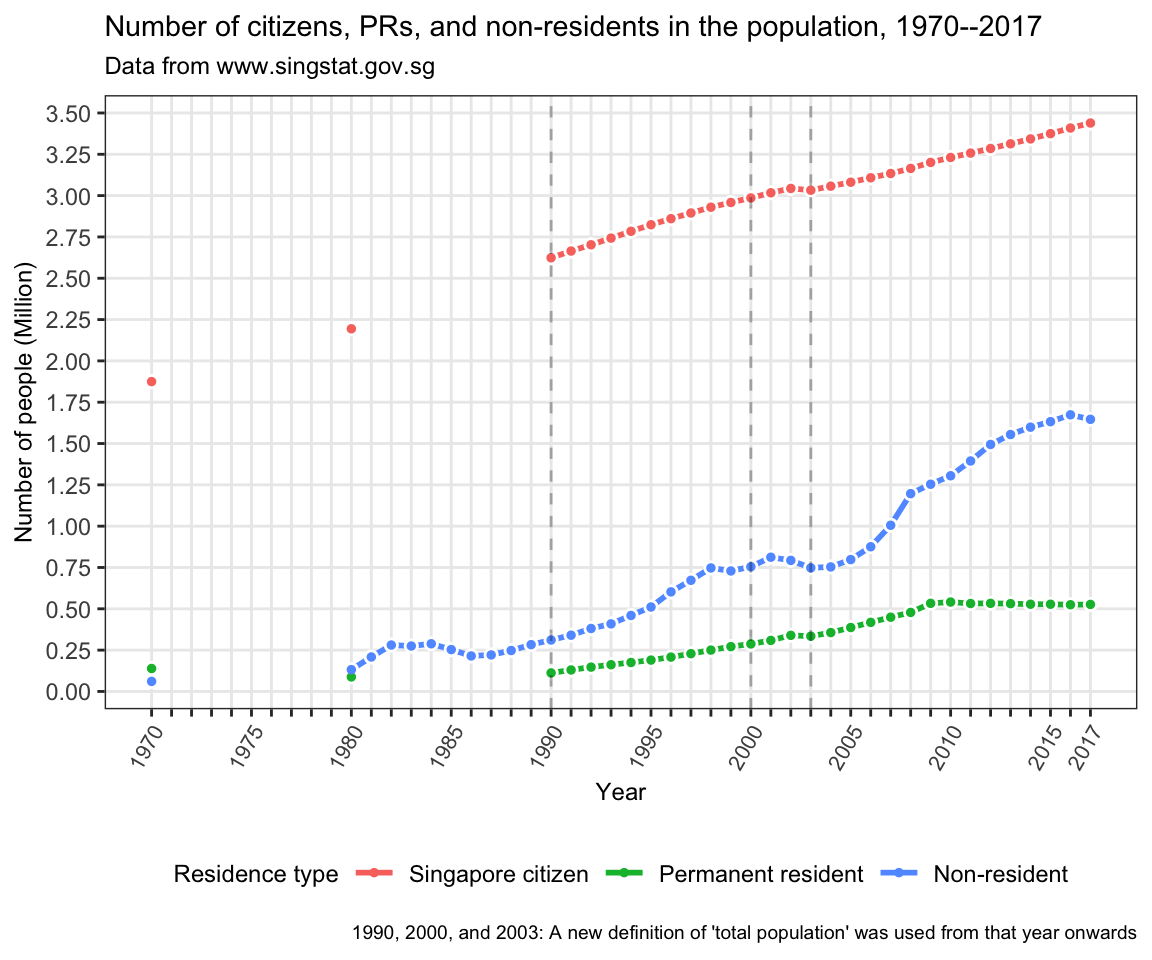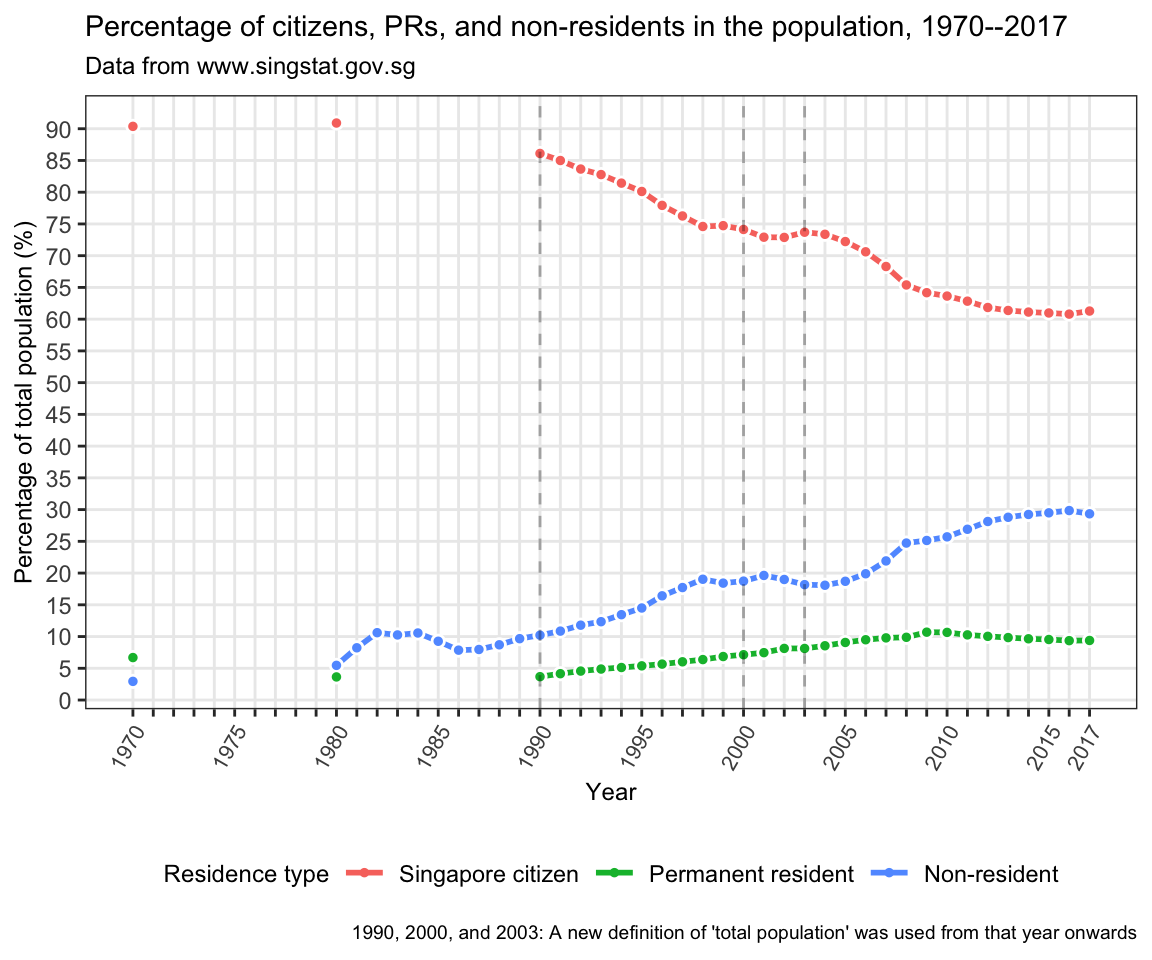The changing number of citizens, permanent residents, and non-residents in Singapore
Have you ever wondered:
How many people are there in Singapore?
How many citizens, permanent residents, and non-residents are there?
How have these numbers changed over the years?
These types of questions are regularly discussed in Singapore, whether in the news or our local coffeeshops. We may hear about the numbers in the most recent year, like 2017, and some other specific year, like 2000. However, this means we usually miss out on what’s happened in all the other years (like before 2000, and from 2001–2016). We may also hear about different numbers from different people and get confused.
Using data provided by the government1, I present the trends in the number of citizens, permanent residents, and non-residents in Singapore.
How many people are there in Singapore? The lollipop chart below shows the total population in Singapore each year from 1960 to 2017. The total population is made up of Singapore citizens, permanent residents (PRs) and non-residents2.
The total population increased by an average (median) of 52,000 people every year from 1.65 million people in 1960, to 5.61 million people in 2017.
There were only two years where the population dropped:
in 1986, where there were 2,600 fewer people compared to 1985; and
in 2003, where there were 61,000 fewer people compared to 2002. This is likely because data from 2003 onwards excluded residents who were overseas for a continuous period of 12 months or more3.
The greatest annual increase in the population happened in 2008, where there were 250,000 more people compared to 2007.

What about a breakdown of the population by Singapore citizens, permanent residents (PRs) and non-residents? The line chart below shows the trend in the number of Singapore citizens, PRs, and non-residents. The line for non-residents starts at 1980 while the lines for citizens and PRs start at 1990 because that is when consecutive years of data are available. Data before 1970 are not available.
The number of Singapore citizens increased by an average (median) of 30,200 each year, from 2.62 million citizens in 1990 to 3.44 million citizens in 2017.
The number of permanent residents increased by an average (median) of 17,200 each year, from 112,000 permanent residents in 1990 to 527,000 permanent residents in 2017.
The number of non-residents increased by an average (median) of 47,700 each year, from 311,000 non-residents in 1990 to 1.65 million non-residents in 2017.

The chart below shows the trend in the percentage of Singapore citizens, PRs and non-residents. The line for non-residents starts at 1980 while the lines for citizens and PRs start at 1990 because that is when the data are available. Data before 1970 are not available.
The percentage of Singapore citizens in the Singapore population decreased by an average (median) of 1 percentage point each year, from 86.1% in 1990 to 61.3% in 2017.
The percentage of permanent residents in the Singapore population increased by an average (median) of 0.3 percentage points each year, from 3.7% in 1990 to 9.4% in 2017.
The percentage of non-residents in the Singapore population increased by an average (median) of 0.7 percentage points each year, from 10.2% in 1990 to 29.3% in 2017.

It is interesting to note that the percentage of non-residents in the total population was just under 20% from 1998 to 2006, but increased rapidly to 25.1% in 2009. From 2006 to 2009, the total population increased by 586,000 people, of which
64.5% were non-residents,
19.7% were permanent residents, and
15.8% were Singapore citizens.
As a result, the percentage of Singapore citizens in the total population decreased from 70.6% in 2006 to 64.2% in 2009.
www.singstat.gov.sg↩
According to www.singstat.gov.sg: ‘The non-resident population comprises foreigners who were working, studying or living in Singapore but not granted permanent residence, excluding tourists and short-term visitors’.↩
According to www.singstat.gov.sg: ‘Data for 1980 and earlier Censuses refer to all persons present in S’pore on Census day. Data from 1990 onwards are based on de jure concept. Data from 2000 onwards are based on the register-based approach. Data from 2003 onwards exclude residents who are overseas for a continuous period of 12 months or longer as at the reference period.’↩